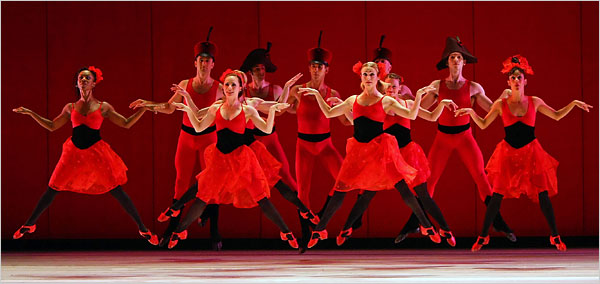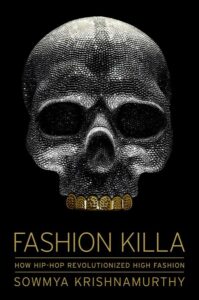Throughout the Fall for Dance Festival program on September 23, 2009, the use of partnering was a major theme in each performance.

Of all the night’s exhibitions, Paul Taylor Dance Company’s presentation of the “Offenbach Overtures” was very forthright with its usage of partnering. This theatrical number called on its 12 dancers to do more than just dance. They had to tap into whatever acting skills they had in their repertoire to execute the choreography. At various points in the piece the dancers were called upon to pretend they lacked the technique and skill they trained many years to achieve. As anyone with a refined skill knows, it is somewhat harder for one to pretend to be unable to do something they are trained to do than to actually be unable to do it. The dancers’ comedic efforts were rewarded with laughter on the audience’s part.
One of the scenes in which partnering stood out greatly was the duel scene featuring four of the piece’s six male dancers. The dancers were the essence of bravado and machismo as they dueled. They executed movements that ranged from highly athletic to dramatic and comedic in nature. As the original duelers’ relationship began to resemble something of a modern-day bromance, the seconds started their own duel.

The choreography allowed the dancers to effectively utilize the entire stage while showcasing their knack for dance and acting. Their movements were synchronized, precise and utilized many levels. When dancing in large groups, those who had to dance solo or in pairs were able to shine without taking away from the rest of the group. The dancers’ entrances and exits throughout the performance also aided in this.
The dancers’ focus shifted based on what was going on in each scene. If they were working with a partner, they concentrated on each other. At other times the dancers usually gazed at the crowd as their facial expressions and expressions of the body worked synergistically. In one scene in particular, one of the female dancers caught the eye of two male suitors who each proceeded to grab one of her arms. Her face was furious as any woman in that situation would have been. She continued to portray this feeling of anger and disbelief through her body movements as she exited stage right.
The bright lighting, lively music and bright red background added to the energy of the performance. The costumes chosen were well-suited for this piece. Five of the men wore red unitards and one wore black. Their heads were adorned with either a black pirate hat or red captain hat. This allowed them to be split into two groups based on their hats during various parts of the performance. The girls all wore dresses, five in red and one in black. The couple that was outfitted in black wore masks at one point when they were searching for each other in a scene that mimicked a masquerade ball.

The rest of the program highlighted other examples of partnering. In Boston Ballet’s presentation of “Afternoon of a Faun,” there was partnering between the nymphs, the main nymph and the Faun, the group of nymphs and the Faun, and the Faun and the veil. The choreography of the two female dancers in Batsheva Dance Company’s “B/olero” allowed them to be synchronized partners in one moment and solo dancers in another. Additionally, in Savion Glover and the OTHeRz’s John Coltrane tribute “The StaRz and StRiPes 4EvEr for NoW,” the partnerships not only occurred between the dancers, but between the dancers and musicians as well.
Overall, Fall for Dance’s September 23 program was well received and the “Offenbach Overtures” was as energetic as one would hope a performance with a vibrant red background would be.
(photos from nytimes.com)



